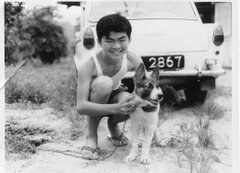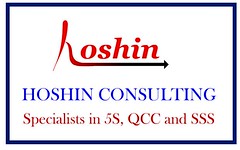 Photo 1: SHELL station at Beach Road, opposite the former Beach Road Camp which would later become the future South Beach Hotel (circa 1968). Site is now occupied by Raffles LaSalle.
Photo 1: SHELL station at Beach Road, opposite the former Beach Road Camp which would later become the future South Beach Hotel (circa 1968). Site is now occupied by Raffles LaSalle.Ten years later, a public tender was called in 1982 for a petrol station at the Golden Shoe Multi-storey Car Park - bounded by Church Street and Market Street. The tender went to SPC. I am not sure for the change of heart but I believe this is the only petrol station inside the CBD after the last one at Springleaf Tower closed.
 Photo 2: SHELL station after the slip road from Tank Road into Oxley Rise. Later the site was replaced by the Oxley Flyover (circa 1968). In the background is Clemenceau Avenue towards Orchard Road.
Photo 2: SHELL station after the slip road from Tank Road into Oxley Rise. Later the site was replaced by the Oxley Flyover (circa 1968). In the background is Clemenceau Avenue towards Orchard Road.There were five key reasons for phasing out all petrol stations.
1) There were too many petrol stations in the city area rendering uneconomic use of expensive and scare land resource.
2) Petrol stations lie along busy thoroughfares and were seen as causing traffic hazards as vehicles move in and out disrupting a smooth traffic flow.
3) Not many were environmentally friendly; waste engine oil went into public drains. The road surfaces were often coated with black oily patches. Many were even aesthetically an eye-sore.
4) Petrol stations were fire hazard candidates because they were used to host the Seventh Month Festival. Something catastrophic could happen when giant size joss sticks and burnt paper offerings stood dangerously close to the fuel pumps.
5) New housing estates were built and it would be better when motorists obtain petrol services nearer to their homes.
 Photo 3: CALTEX station was at the corner of Killiney Road and Somerset Road (circa 1975). Now is occupied by ORCHARD CENTRAL.
Photo 3: CALTEX station was at the corner of Killiney Road and Somerset Road (circa 1975). Now is occupied by ORCHARD CENTRAL.Petrol stations could be classified in three different categories; stand pump, petrol service station and full service petrol station.
A stand pump was nothing more than a dual gasoline pump offering petrol and diesel. The second type, petrol service station occupied a bigger space and comprised of several pumps and sold various grades of fuel – Ordinary Petrol, Regular Petrol plus diesel. The third type was a full-service petrol station offered lubrication services, sold motor accessories and petrol.
 Photo 4: ESSO station at the corner of Mount Elizabeth and Orchard Road (circa 1976). TONG BUILDING has replaced the station.
Photo 4: ESSO station at the corner of Mount Elizabeth and Orchard Road (circa 1976). TONG BUILDING has replaced the station.Geographically petrol stations were located at the city fringe area and those inside the city area, apart from those in the new housing estates and rural areas. There was a George Lee Motors Station at the corner of Clemenceau Avenue (now Clemenceau North) and Peck Hay Road. George Lee Motors can be categorized as the third type. A SHELL station along Tanglin Road, next to St Martin’s Apartment was the second type. A stand pump example was the one at the former site of the Overseas Union House before it was built. Did you know at the corner of Orange Grove Road and Orchard Road there used to be a SHELL station; now it is the Orchard Hotel?
 Photo 5: SHELL station at the corner of Penang Lane and Orchard Road, now Doby Gaut MRT Station (circa 1973). Penang Lane is in the foreground. Universal Car Distributors held the distribution franchise for Ford cars in Singapore.
Photo 5: SHELL station at the corner of Penang Lane and Orchard Road, now Doby Gaut MRT Station (circa 1973). Penang Lane is in the foreground. Universal Car Distributors held the distribution franchise for Ford cars in Singapore.To define the geographical boundaries of the city area and city fringe, I use the “Restricted Zone Scheme” definition. When I attended Raffles in 1967 my friends and I would spend out Saturday afternoons after ECA, walking and exploring the city streets. From memory, I knew the following locations of the petrol stations:
1) Next to the former Orchard Road Police Station
2) Corner of Penang Lane and Orchard Road
3) Corner of Manila Street and Victoria Street
4) At the now Oxley Flyover over Clemenceau Avenue
5) Beach Road, between Raffles Hotel and Seah Street
6) Corner of Mount Elizabeth and Orchard Road
7) Corner of Killiney Road and Somerset Road
8) Corner of River Valley Road and Clarke Quay
9) Corner of Eu Tong Seng Street and Upper Cross Street
10) Corner of Anson Road and Prince Edward Road
11) Former Overseas Union House at Collyer Quay before it was built
 Photo 6: Stand Pump petrol station to the right of Clifford Pier in the public car park area (circa 1957). This station sold to motorists as well as water-boat operators. The public car park later became the Overseas Union House – housing the Neptune Theater, Bank National d’Paris and OUB.
Photo 6: Stand Pump petrol station to the right of Clifford Pier in the public car park area (circa 1957). This station sold to motorists as well as water-boat operators. The public car park later became the Overseas Union House – housing the Neptune Theater, Bank National d’Paris and OUB.Is that all to the above list? Can you help me identify other locations inside the “Restricted Zone”?
Did the government do the right thing in the 1970s? The government had a long term vision but in the early days, many did not agree. Yesterday’s petrol stations are now gone. Replacing them are modern shopping and office complexes and public parks. Most definitely there is less pollution and everything is clean.
Photo Credits to the late Derek Lehrle, Donna Brown and William Rank. Thank you for all those wonderful memories.





14 comments:
I guess petrol stations being moved out of the CBD was not a bad idea. Moving all major schools out - now that one I have never thought of as a good thing.
I recently came across your blog and have been reading along. I thought I would leave my first comment. I don't know what to say except that I have enjoyed reading. Nice blog. I will keep visiting this blog very often.
Glad you enjoyed this blog. If you are new, do check out the older stories. We have more than 40 articles put up my many different writers both from Spore and overseas.
Thanks to Peter for the photos. I don't know. I should be familiar with these places you mentioned, yet I don't recognize any of the photos. Goes to show you know normally pay attention to them unless you patronize them. Most of the petrol stations that I patronize are outside the CBD. But I do recall the one at Golden Shoe becos it seemed like such an unusual place to have a petrol station.
Peter, as always Spore does these things very thoroughly and in an organised fashion. Here in the UK there are very few city centre stations left, I can't think of one here in Cambridge. Here I think it is mostly market pressures that have driven petrol stations further out - rents too high in the city centre plus all the nuisance factors and in recent decades the rise of the supermarket - most of us buy the slightly cheaper fuel available at the large supermarkets in the suburbs or on the fringes of all our cities
Even the SPC one at Golden Shoe is gone - victim of post-9/11 paranoia. I had not realized that there had already been a previous exercise of deliberately pushing petrol stations out of the CBD, as opposed to just letting them sell out or waiting for their leases to expire.
From an environmental point of view, that was definitely the right thing to do. I suspect, though, that the primary driver was land use or a particular person's sense of aesthetics.
It is not only the petrol stations that have been driven out of the city. More recently, government offices and ministries are also making the exodus. I believe that the main reason is that land in the city comes at a premium and it makes better economic sense to build condominiums, offices and shopping centres on it instead.
As for petrol stations sited within buildings, it is not safe to do so, regardless of whether the petrol stations are in the city or not. The one in Golden Shoe was not the only one removed. There was also a Shell station at the junction of East Coast Road and Tembeling Road that was also removed because it was situated under a building.
petrol stations that were integrated into commercial or residential buildings were definitely phased out for safety issues. besides the ones mentioned before, other such petrol stations I can remember are the shell station at coronation plaza in bukit timah and the one along Tanglin road close to Ellis rd. Seems like it's always shell that has such designs...
Talking about petrol stations near to buildings and crowded areas, I think of one at junction of Rochore Canal Rd and Short Street.
Sorry typo error in my comment above. We have more than 400 stories in this blog.
Chun See
The petrol station you mentioned was at within Golden Wall Auto Center. Very special station indeed. Why?
The entrance to the petrol station was from Short Street, exactly at the edge of the RZ overhead gantry. The exit from the petriol station was to Bukit Timah Road in front of Rochore Canal.
In the early days of the RZ, motorists travelled to the Bukit Timah exit and reversed their vehicles into the petrol station and further reversed backwards into Short Street. This way didn't need to pay S$3 to enter CBD Area.
This was not discovered for some months until some nutty reader wrote to the Strais Times and then the government decided to station a policeman at the gantry. So this was how the gantry was manned by policemen and now using electronic detection device.
Hello, just found your blog which is great. Thanks for doing this, really enjoying it. So happy to see some of these pictures, some of them just fractured memories before.
Does anyone remember where is the petrol kiosk thats located in a building? it's either shell or BP.
Hello. How is everybody? Very nice blog .. This issue in particular I love ... I am a student of business administration career and I feel great pation by all subjects related to my career ... Thanks for the info
Post a Comment